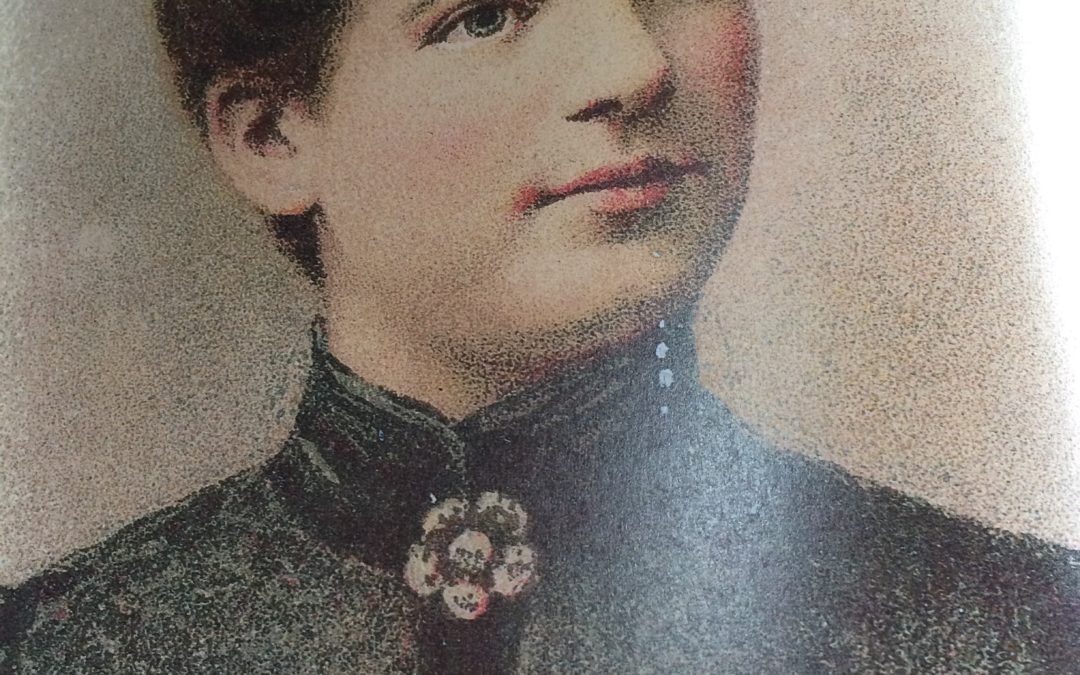I recently came across the first book written by Sarah Ban Breathnach, who you might remember later wrote the bestseller, Simple Abundance. Her first book is quirky, but I kind of love it. It’s called Mrs. Sharp’s Traditions: Reviving Victorian Family Celebrations of Comfort and Joy. It’s all told in the voice of the fictional Mrs. Sharp, who is a classic Victorian literary domestic – one of those “women scribblers” that so many male writers of the time derided, because, like pop culture heroes today, everyone read them and paid attention to them. The Oprahs and Martha Stewarts of the time. Mrs. Sharp has that same voice that you hear in Real Simple or Good Housekeeping, reassuringly bossy and mom-ish. She tells us what to do on “criss cross” days when we (and our children) are losing it. “Start over,” she suggests, with a full new breakfast and everything. And how to deal with autumn’s work around the home – have the whole family put in an hour raking, preparing the garden, stockpiling wood, dusting, vacuuming. And then have a Maple Leaf Luncheon and Nutting Party – with maple leaf crowns, a table decorated with nuts and leaf etchings, Autumn soup in pumpkins with brown bread and apple tarts. Wow! Like Martha Stewart, high maintenance but fun! And maybe I’ll try like two parts of it and feel happy with that.
So I love this weird old-fashioned voice. Also, I admire Ban Breathnach for her efforts to bring the feminine tradition onto equal footing with more patriarchal literary traditions. We still aren’t really there – but there is a whole couple of generations of women who made so many great strides. This first book is homage. It basically replicates those women scribblers, and then later she finds her own way with Simple Abundance and her other books. I also appreciate the book’s focus on that Victorian concept of home – where the wrongs of the world were put away and peace, joy, order, and beauty reigned – and how it has remained hugely influential in our culture. Though it is idealistic and obviously flawed, the way the Victorians imagined home has shaped so much thinking about architecture, domestic space, city planning and product design and more from the late 1800s onward. Suburbs are the obvious embodiment of it. They are a whole living world largely removed from work and developed around domestic life, an escape for the family, mostly managed by women. Now, that has changed, but that is how they developed.
Of course, what I like best is that she’s gone through the whole calendar year of Victorian traditions that marked and made the year special. For the early fall, she suggests making a scarecrow and celebrating Michaelmas, a Victorian celebration of Michael, the archangel who threw Lucifer out for his treachery. The usual day is September 29. St. George, Ban Breathnach tells us, was Michael’s representative on earth, famous for slaying dragons and rescuing princesses. In the Victorian era, this holiday was a time to celebrate the end of harvest work. Fairs were held and in the home, children reenacted the legend of St. George and the dragon. Mrs. Sharp’s idea is to make a sweet dough dragon out of refrigerated dough from the grocery, and fill his stomach with apples and dried fruit. Use almonds for scales. And then have a lovely tea. I’ll let Mrs. Sharp’s voice end this post, because it is so retro and fun. “Soon the children are lost in play, as knights and princesses in castles far, far away. Mrs. Sharp lingers over her cup of tea, savoring the contentment that always come when she makes a special effort to keep an old tradition alive.” (191). And then she concludes, “Does a modern family really need to observe Michaelmas? Ah, dear Reader, you must look into your own heart to discover that answer.” Look into your heart? Well, that’s why I love the Victorians.


